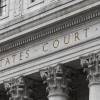Caso Chevron
With latest Chevron decision, issues of piercing corporate veil remain
The plaintiffs sought to seize the shares of Chevron U.S.’s seventh-level subsidiary, Chevron Canada Limited (Chevron Canada), and to pierce Chevron Canada
The Lawyer's Daily 11/06/2018

The long and twisting saga of Yaiguaje v. Chevron Corporation took another turn recently with the latest decision in this matter from the Ontario Court of Appeal (Yaiguaje v. Chevron Corporation 2018 ONCA 472).
At its core, this case is about attempts to enforce a US$9.5 billion judgment in Canada which was obtained in Ecuador against the U.S. company Chevron Corporation (Chevron U.S.). A New York court declined to enforce this judgment in the United States, finding that the Ecuadorian judgment was obtained by fraud.
The plaintiffs sought to seize the shares of Chevron U.S.’s seventh-level subsidiary, Chevron Canada Limited (Chevron Canada), and to pierce Chevron Canada's corporate veil so that its shares and assets would be available to satisfy the judgment against its parent, Chevron U.S.
In a 2017 ruling the Ontario Superior Court of Justice granted the Chevron defendants summary judgment, finding that the shares and assets of Chevron Canada were not available for seizure to satisfy the Ecuadorian judgment, and that Chevron Canada's corporate veil should not be pierced.
On appeal, the Ecuadorian plaintiffs sought to overturn the Superior Court ruling on both issues.
The Court of Appeal unanimously dismissed the appeal and ruled in favour of the Chevron defendants, though the majority and concurring minority opinions came to different conclusions about the test for piercing the corporate veil.
The majority opinion largely echoed the analysis and findings of the Superior Court’s ruling, finding that Chevron Canada’s shares and assets were not subject to be seized under the Execution Act (as these shares were not held directly by Chevron U.S.) and that the applicable test to pierce Chevron Canada’s corporate veil had not been met.
The majority rejected the argument that courts can pierce the corporate veil for reasons of equity, reiterating that the applicable test for piercing the corporate veil is set out in Transamerica Life Insurance Co. of Canada v. Canada Life Assurance Co., 28 O.R. (3d) 423.
Part of this test requires that in order to pierce a subsidiary’s corporate veil, the court be satisfied that the subsidiary was incorporated for a fraudulent or improper purpose or used by the parent as a shell for improper activity. In the present case the majority found that this test was not satisfied as there was no allegation of wrongdoing against Chevron Canada.
The majority was concerned that abandoning the Transamerica test would lead to ad hoc applications of equity to pierce the corporate veil, introducing uncertainty into corporate law.
While Justice Ian Nordheimer (writing a concurring minority opinion) also dismissed the appeal, he disagreed with the majority about whether the Transamerica test was applicable in these circumstances and on the general approach with respect to when the corporate veil can be pierced.
Regarding the Transamerica test, Justice Nordheimer explained that it was adopted in the context of deciding whether liability could be imposed by lifting the corporate veil, but that it may not be applicable to the judgment enforcement context, as “it would appear to be very difficult to conceive of a factual situation where the Transamerica test could be met by a judgment creditor, that is, where the corporate structure would be found to have been ‘used as a shield for fraudulent or improper conduct’ solely in the execution context”.
Justice Nordheimer then reviewed the case law concerning piercing the corporate veil, noting several instances in which it appeared that the courts had applied equity to do so and observing that the power to pierce the corporate veil stems from the courts' equitable jurisdiction.
Read more here
Fuente OriginalNotas relacionadas
-
 Noticias de Ecuador. Podcast Noti Oriente [7 de julio, 2023]
Noticias de Ecuador. Podcast Noti Oriente [7 de julio, 2023] -
 Steven Donziger – The Hits Keep Coming
Steven Donziger – The Hits Keep Coming -
 Analysis: Liberal Media Lionize Anti-Chevron Lawyer Steve Donziger
Analysis: Liberal Media Lionize Anti-Chevron Lawyer Steve Donziger -
 Inicia juicio contra abogado que demandó a Chevron por contaminación en Ecuador
Inicia juicio contra abogado que demandó a Chevron por contaminación en Ecuador -
 Judge Scoffs At Donziger's Bid To DQ Entire SDNY Bench
Judge Scoffs At Donziger's Bid To DQ Entire SDNY Bench -
 Manipulación de los pueblos indígenas en fraude contra Chevron
Manipulación de los pueblos indígenas en fraude contra Chevron





